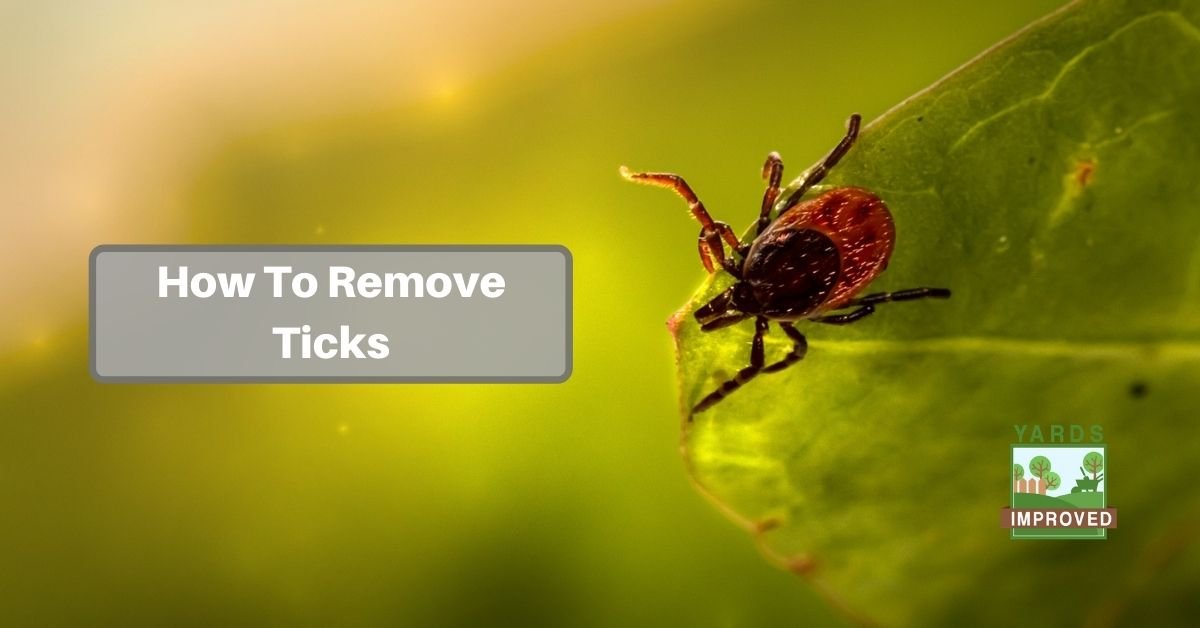Ticks can be a common garden pest, especially if you live on the edge of a forest or have thick underbrush in your yard. They can land on you or your pets. And their bite can carry various diseases that can do serious long-term harm to your health, your family, and your pets.
If you do find a tick on you, it’s important to remove it. Unfortunately, a lot of popular “solutions” can make the situation worse. So we’ve consulted the best medical centers to get good advice on how to get ticks off the bodies of pets and people, too.
We’ll also share some tips for how to look out for ticks and get a jump on removing them. We’ll talk about removing the tick from yourself, but these tips apply equally to other people and to pets.
How To Remove A Tick
If you find a tick on you, try to remove it as soon as possible.
Ticks attempt to burrow under their host’s skin to reach the blood. They dig in using their mouths and gradually dig deeper.
Your goal when removing a tick is to get the whole body out. The easiest way to do that is to pull it straight out.
Use pointed tweezers to grasp it near the head. Pull it straight out. Don’t twist or squeeze. Always pull in a straight line, in the opposite direction of where the tick’s heading is pointing.
This straight-line method helps prevent parts of the tick from breaking off under your skin. Removal should be as simple as that.
Be sure to disinfect the area around the bite with rubbing alcohol or soap and water to reduce the risk of infection.
Don’t throw the tick’s body away! As disgusting as it may sound, we suggest you seal it in a plastic bag for at least a few weeks. If you do develop any symptoms that might be related to the bite, your doctor can have tests done to see if the tick bore any diseases.
What If Part Of The Tick Remains Under Your Skin
Sometimes, parts of the tick may break off under the skin. Do not try to dig it out with tweezers or any other implement. Doing so increases the risk of infection! Let your body force it out on its own over a few days. Watch for other symptoms as we’ll discuss below.
What Never To Do
There is, sadly, a lot of bad advice about getting rid of ticks. These can increase the risk of harm rather than decreasing it.
Do not try to burn the tick out with a burned-out match. This can make it burrow more deeply to escape!
Likewise, do not try to drown it with petroleum jelly or nail polish. They can have the same effect – the tick may try to get away, but that could mean going further into the skin rather than out of it.
Never crush the tick’s body, either. This raises the risk of infections.
What To Look Out For After A Tick Bite
Most often, tick bites will be harmless. However, be aware of your general well-being over the next several weeks.
If you feel feverish or experience a rash, chills, headache, or muscle and body aches, they could be the result of the bite. Pets may lose their appetite or seem lethargic.
See your doctor (or veterinarian, as appropriate) if you notice these symptoms. Tell them when and where you noticed the bite. If you saved the tick’s body, ask the doctor to have it tested.
When caught early, most tick bite infections can be treated with antibiotics. However, some cases may run the risk of:
- Lyme Disease
- Rocky Mountain Spotted Fever
- tick-borne relapsing fever
- babesiosis
- ehrlichiosis
- tularemia
These can cause serious problems, so don’t discount any symptoms.
How To Avoid Getting Ticks
Of course, an ounce of prevention is worth a pound of cure. It’s best to avoid ticks in the first place!
When possible, avoid areas where ticks are common.
Wear long-sleeve shirts and pants. Tuck your pants into your socks – it might not be stylish, but it is helpful!
Insect repellents containing DEET or picaridin also work well. You could also spray your clothes with permethrin.
No matter what precautions you take, it’s always good to check your body for ticks if you’ve had possible contact. Make sure your children do the same. Remind older children to look over their bodies carefully. Help younger children to do so. And look over your pets carefully, too.
Ticks are tough; they can be hard to kill. If you do find one and don’t need to save it for testing, be sure to get rid of it. The best solutions are:
- Flush it down the toilet;
- Drown it in soapy water or rubbing alcohol;
- Or use tape to wrap it up then throw it out.
Don’t crush it, since the inner juices could infect you.
Conclusion
Ticks are commonly encountered in thick underbrush or along forest edges. They can carry various dangerous diseases. If they start to burrow into your skin, it’s important to follow the proper method to remove them. Be sure to look out for symptoms, though, and consult the proper medical authority if you notice any!









